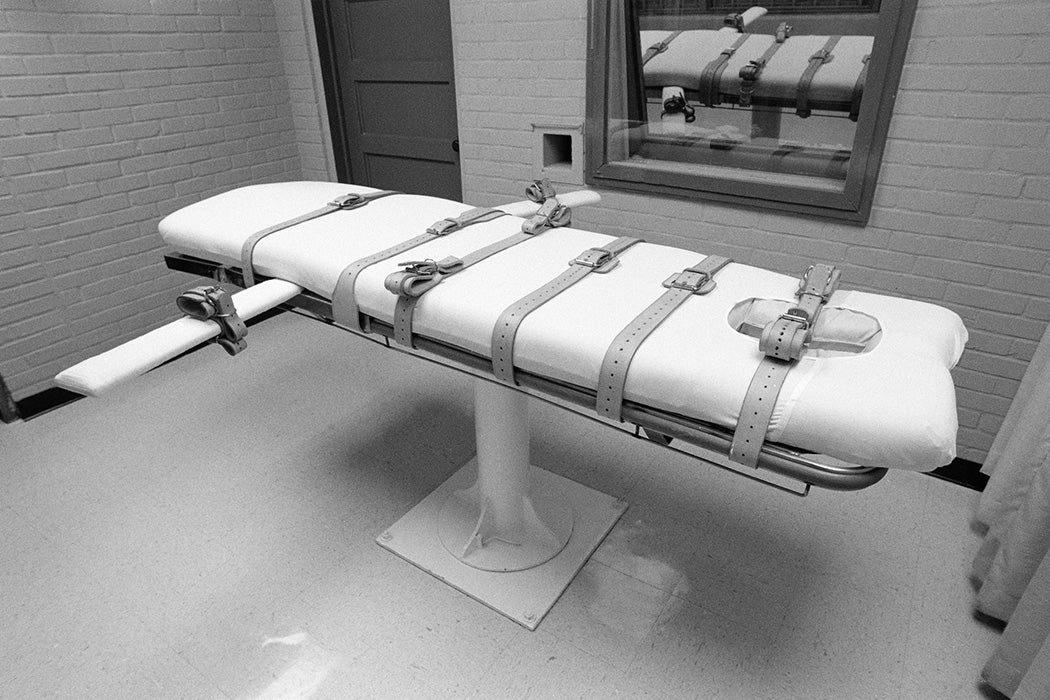This week, the state of Georgia executed Warren Hill, an inmate who was declared to be mentally impaired by all seven medical experts who assessed him. Many have argued that the execution was unconstitutional, particularly in the light of a 2002 supreme court ruling against executing people with intellectual disabilities. Whatever the facts of this particular case, it is sure to reignite once again the wider debate over capital punishment. But what does the evidence say?
In a useful review article, the sociologists Michael Radlet and Marian Borg set out six arguments for and against the death penalty. The first is the issue of deterrence. Radlet and Borg cite a number of surveys showing that experts generally believe that the death penalty does not constitute an additional deterrent above and beyond life imprisonment. Experts can be wrong of course. But perhaps the most comprehensive review of the evidence to date, published by the National Research Council, concluded that it is simply impossible to say whether or not capital punishment has any effect on homicide rates, given that no studies have been able to compare the effect of capital punishment to a life sentence. Indeed a Gallup poll from 2014 found that just 6% of death-penalty supporters cite deterrence as the reason for their view, down from 13% in 1991.
Incapacitation – “well, they won’t do it again” – seems a somewhat strange argument to make, given the alternative possibility of life imprisonment. Perhaps the 7% of death-penalty supporters who cite this reason (down from 19% in 1991) are concerned about the possibility of lifers escaping, or attacking their guards or fellow inmates. If so, these concerns are probably misplaced. Radlet and Borg cite a study of prisoners whose death sentences were commuted in 1972, which found that only around 1% went on to kill again. That said, although it is unwise to draw conclusions from a single case, particularly when mental impairment is involved, the crime for which Warren Hill was executed was the murder of a fellow inmate, while on a life sentence for a previous murder.
When many states reintroduced capital punishment in the 1970s, an argument made at the time was that imposing the death penalty for particular offences would avoid the racial and class biases associated with sentencing. In other words, the death penalty was supposed to address the issue of poor black defendants receiving harsher sentences than rich white defendants. It is difficult to argue that the reintroduction of capital punishment has solved this problem. A number of experimental mock jury studies have found that black defendants are more likely than white defendants to receive a death sentence in otherwise-identical trials, particularly when jurors struggle to understand the judge’s instructions.
Perhaps surprisingly, saving taxpayers’ money (i.e., on prison costs) is the second-most-cited reason given by supporters of the death penalty (mentioned by 14% of all supporters in the 2014 poll). In fact, many studies, summarized here by Amnesty International, have found out that, overall, death-penalty cases cost far more than non-death-penalty cases; partly because of the extended appeals process, but more because trials in which the prosecution is seeking the death penalty are longer and more expensive in the first place.
The fact that miscarriages of justice cannot be reversed is an argument that is frequently made against the death penalty, and the second most popular reason listed by its opponents, on 17% (the most popular is that it is “Wrong to take a life” on 40%). Radlet and Borg note that miscarriages of justice include not only the well-publicized cases where a defendant was entirely innocent, but also cases where he is guilty of a lesser crime such as second-degree murder or manslaughter. Still, not everyone agrees that miscarriages of justice constitute a knock-down argument against capital punishment. For example, in a Stanford Law Review article, Cass Sunstein and Adrian Vermeule argue that “the standard moral objections to capital punishment apply even more powerfully to the murders prevented by capital punishment”. Yes, they argue, capital punishment is irreversible and subject to racial bias, but then so is murder. Executing a murderer saves more irreversible and racially-skewed deaths than it causes. However, as we saw earlier, it is far from clear that the claim upon which their argument hinges – that executions save lives by deterrence and/or incapacitation – is true.
This brings us to the final argument in favor of capital punishment: retribution. Radlet and Borg note that this is both by far the most popular argument made by death-penalty supporters (35% in the 2014 Gallup poll; down from 50% in 1991), and the one that is most difficult to address scientifically. All of the other arguments considered above – the death penalty is a deterrent, incapacitates would-be killers, is subject to racial biases, leads to serious miscarriages of justice – are empirical ones; arguments that could be definitively settled with data, if only we had enough of it and knew what to do with it. The argument that killers deserve to die (“An eye for an eye”) cannot be settled in this way.
One question that we can hope to answer with more confidence is that of what the future holds for the death penalty in the US. Although it is often claimed that the vast majority of the public support capital punishment, the most recent figure – 63% – represents a significant drop from a high of 80% in the mid 1990s. What is more, if offered the chance to impose “life imprisonment with absolutely no possibility of parole”, this option (45%) loses out to the death penalty (50%) by only the narrowest of margins (with the remaining 5% offering no opinion). The likelihood is, then, that at some point or other, the US will fall into line with most of the developed world and end capital punishment.
Editor’s note: A journal article cited in an earlier version of this article is no longer available for free on JSTOR.







